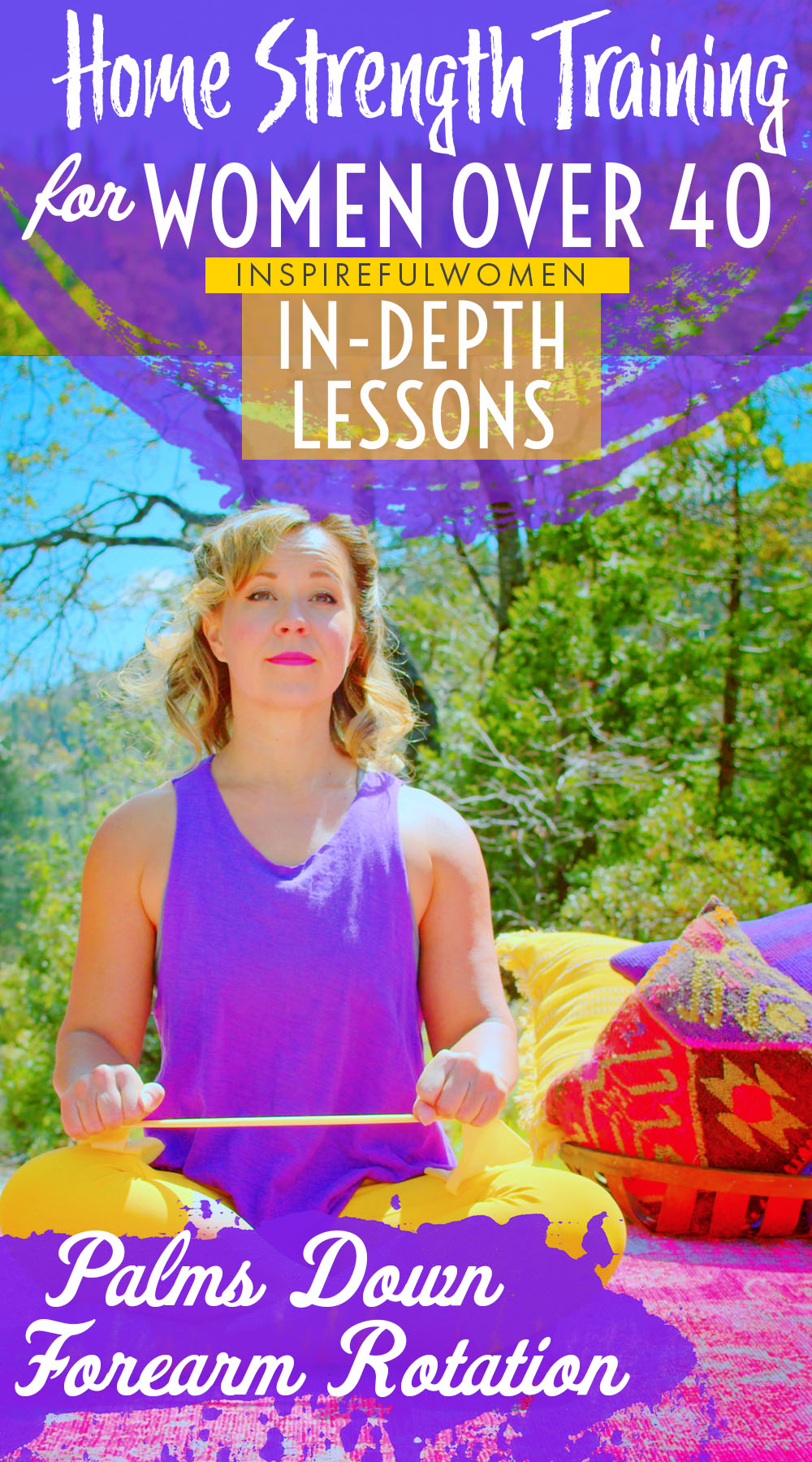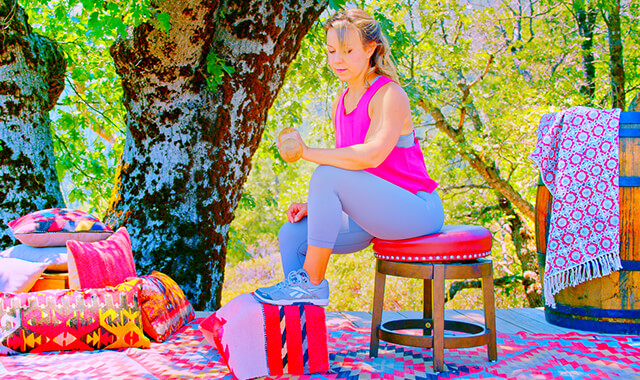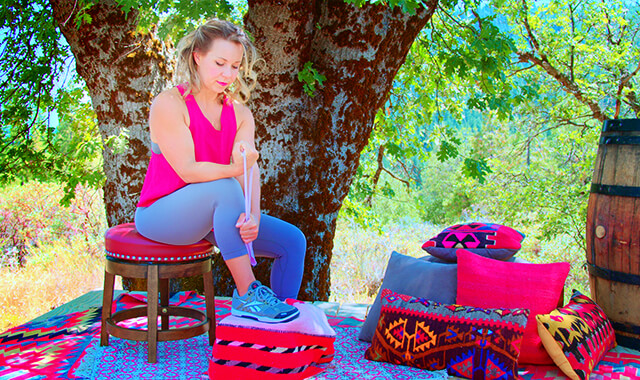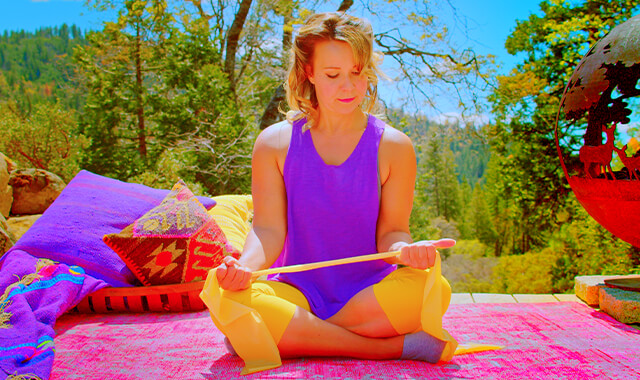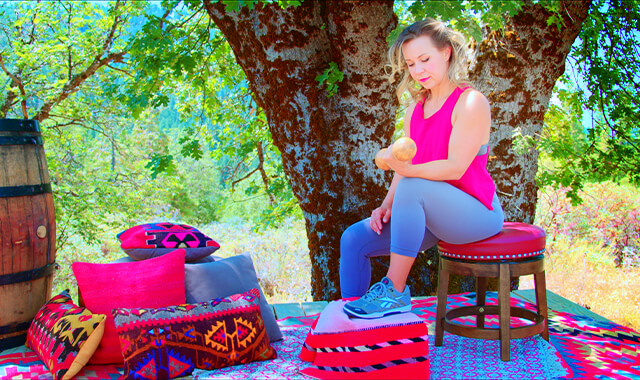Palms Down Forearm Rotation - Wrist Exercise
How to Do Band Pronation Forearm Rotations - Forearm Strength | In-Depth Guide [VISUAL LEARNERS] Beginner
Proper Form | Home Resistance Training
WHAT DO YOU WANT TO SEE?
QUICK DEMO
QUICK DEMO
MUSCLES THIS WORKS
MUSCLES
MAIN MUSCLES WORKED IN the Palms Down Forearm Rotation
SUPINATOR, BICEPS, PRONATOR TERES, & PRONATOR QUADRATUS
STARTING POINTERS
Starting Pointers
WHAT WE'RE DOING TODAY
Other names for this exercise: Pronation Forearm Rotation
ALL WE'RE DOING:
While holding the edge of band taut in each hand, we'll turn our palms from palm up to palm down.
Here's a simple easy beginner forearm exercise for women that will strengthen and build the muscles of the wrist joint. Part of having lean forearms is creating some muscle definition in there. Training our lower arms is important if we want to keep muscle balance when we spend a lot of time training our upper arms. Otherwise we still start to experience pain & injury in our lower arm.
This movement will work the muscles that rotate the forearm to move the hand so that the palm is up. This exercise uses a resistance band and is done in a seated position. Both forearms can be worked at the same time. The exercise is done with the elbows bent, the biceps brachii, and the supinator muscles will contribute to the movement so you should be able to use a moderately strong resistance band. Using a band lets you adjust the resistance as needed - to make the exercise doable but challenging.
HOW TO DO THE EXERCISE
LOOKS
HOW Palms Down Forearm RotationS SHAPE OUR BODY
Toned forearms, balanced upper and lower arms.
PROPER FORM
PROPER FORM: Palms Down Forearm Rotations
EQUIPMENT, SETS & REPS
EQUIPMENT
Main set (3: Light/Med/Heavy)
X-Heavy Band (I recommend getting this too if you plan to use resistance bands frequently).
SUGGESTED STARTING WEIGHT FOR WOMEN:
Moderate resistance
SETS & REPS:
1-2 sets of 8-10 reps (if you have a history of elbow or wrist pain, start with one set)
PACE:
Moderate up (concentric) and slow return (eccentric) - controlled
BODY POSITION
BODY POSITION FOR THE Palms Down Forearm Rotation
BAND: Hold one end of the band in each hand.
STANCE: Neutral spine. Shoulder blades back and down, sternum lifted.
ARMS: Upper arms stabilized by the sides of your torso, elbows bent so that your forearms are parallel to the floor.
HANDS: Supinated - palms facing up. The band is going to run under the backs of both of your hands, the ends of the bands wrap around the thumb side of your palms and gripped. There should be tension on the band in the starting position.
HOW TO DO
HOW TO DO Palms Down Forearm RotationS
CUE: Try to rotate both forearms equally.
Rotate your forearms to move your hands from palms up to palms down.
Slowly return to palms up.
Repeat for the desired number of reps.


WHAT WE'RE DOING TODAY
WHAT & WHY
BENEFITS OF TRAINING THE forearm MUSCLE
WHAT
These exercises target the muscles of the forearm that are responsible for turning the palm of the hand up (supination) and down (pronation). These are very important movements needed for activities like using a screwdriver. Some arm exercises place the forearm in either a pronated or supinated position to carry out the movement. The muscles are strengthened but isometrically - meaning that they are holding the position steady but they are not performing a movement. It is important to include exercises that work the muscles as the muscles are moving the bones because this is how they are used. These are very simple exercises - just rotating the forearm to turn the palm of the hand up and down against resistance.
WHY BOTHER DOING IT?
WHY
WHY DO WE EVEN CARE?
The ability to turn the palm of the hand up and down is critical for our daily activities. Many of these activities require quite a bit of force, like driving a screw into a hard piece of wood, tightly closing a leaking spigot, or turning a stubborn tub faucet on and off. Keeping the muscles of the forearm strong will improve your ability to use your hands more effectively. The forearm not only helps to move the hand into different positions, but it also helps to hold the forearm still as you do things with your hands.
One of the most frustrating things for the elderly is losing the ability to do these normal daily tasks independently. Focusing on strengthening the muscles of the upper arm and neglecting the muscles of the forearm is like investing in a high-performance phone with non-responsive buttons. It does not do a lot of good to have strong shoulder and upper arm muscles if the forearm and wrist muscles are weak.
EVERYDAY LIFE
EVERYDAY LIFE &
MUSCLE FUNCTION
HOW WE USE OUR Forearm MUSCLES IN EVERYDAY LIFE
The main function of the forearm and wrist is to move and stabilize the hand during fine movements. The forearm muscles move the wrist to position the muscles that control the fingers are in the best position (best length and line of pull) to perform their job. This allows for very controlled fine movements of the fingers.
1. ROTATING THE FOREARM SO THE PALM IS FACING UP (SUPINATION)
- Gesturing “I don’t know” or “Ta-Dah”
- Putting your hand out to receive change
- Turning a doorknob to open a door
2. ROTATING THE FOREARM SO THE PALM IS FACING DOWN (PRONATION)
- Emptying a glass of water
- Turning a doorknob
- Flipping a card over - face down
- Flipping a pancake
3. SUPINATION AND PRONATION
- Turning a book over face up/face down
- Using a screwdriver
- Flipping a card over face up/face down
- Turning the steering wheel
SCIENCY STUFF
SCIENCY STUFF
SPIFFILICIOUS FACTS ABOUT MUSCLES & MOVES
Two bones make up the forearm - the ulna and the radius. The bones are long - running from the elbow joint to the wrist, and they lie next to each other. The muscles of the forearm can turn the palm of the hand up (supination) by rotating one end of the radius to that it crosses over the ulna. The primary muscles for supination are the supinator and the biceps brachii. The forearm can also turn the palm of the hand down or pronate. The primary pronators are the pronator teres and the pronator quadratus.
ALLLL MUSCLES & WHEN
ALL MUSCLES WORKING & WHEN DURING THE Palms Down Forearm Rotation
Flexor digitorum profundus and superficialis, palmar interossei, and flexor digiti minimi brevis work to hold the band.
The pronator quadratus and pronator teres work concentrically to rotate the forearm into pronation.
The same muscles work eccentrically as the hand returns to the starting position.
PIN IT FOR LATER!
